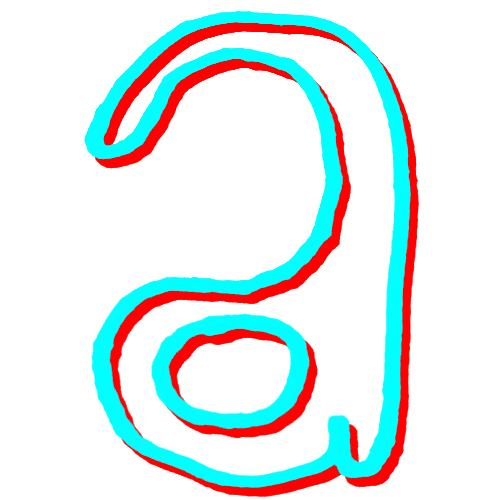The Object-of-Power: Panteha Abareshi’s I am Inside the Body
I am Inside the Body. Panteha Abareshi. Los Angeles: Sming Sming Books, 2020. 44 pages.
Panteha Abareshi’s new book from Sming Sming Books, I am Inside the Body, documents “a problem with no solution.” In which the artist grapples with grief and sickness, struggling against the disabilities of their body. All of this coinciding with a global pandemic—the book itself being made in the midst of the California wildfires.
The text takes an intensely haptic form. The book is spiral bound, built from Post-It notes, diagrams, grid paper. I am Inside the Body is not so much written as it is assembled. Its content and structure take a uniquely bodily position. The text adheres to the claims of its title, as engaging with Abareshi’s work often feels like sifting through the innards of an abstract body—as if each note is materializing through a brain stem, or as if each diagram is siphoned from rogue neural pathways. But these systems do not necessarily cooperate with the person inside. Each instead seems to work with its own interests in mind, not at all concerned with the being who occupies this vessel.
It is difficult to succinctly articulate what a body is. It is a container / a prison / a vessel / another organism / the enemy / the known world / the ephemeral machine / a vehicle through time. Whatever it is, it does not bend to our will. It is to an extent autonomous, functioning with its own desires—or at least directives. For Abareshi, the body may exist in two forms: first as the obvious human anatomy—as the thing that we all exist within. Then secondly as an artificial vessel, constructed by the artist. We might think of this latter form as the textual body, with its composition being under the direct supervision of its occupant. Although this is not to say that the textual body is a utopian thing. It is very much tethered to the former, functioning more as an expression of the frustrations that the human body creates. “I remember I’m being held together by nothing at all,” is paired with a diagram of a torus. Abareshi is a chronically ill artist, not only working within the constraints of the body, but of the actively antagonistic body. The diagrams throughout the text communicate what this process is like,through mathematical formulas and geometric figures. Measurements of time and the great ephemeral skin.
These diagrams become raw data which informs / explains the inner workings of the antagonistic body. Alternative configurations. Rearticulating the artist’s writings as protolinguistic variants. Recurring expressions of time and space—the body and the planet as they move across duration—appear. Cones split by planes. Prisms hovering in an enclosed space.
Or perhaps they are more practical / functional than they first appear, telling the closed system of the text how to operate / how to perform certain tasks. Like lines of code in an .exe or metabolic triggers in an organism. In this way, I am Inside the Body becomes a new kind of vessel: a cybernetic object-of-power, a blueprint for a reconfigured body—or at least an alternative to whatever thing we are occupying now. It is an anatomy built by the being that will come to occupy it. Though this text’s innards are not universal—they are deeply personal, crafted from memory. The artist becomes an engineer of their own parts, mapping the wires and nodal points of the text. Seeing a glitching machine and trying to build something that can replace it. Something that can sustain itself for longer, that will not fight against its architect.
In its formation as a new body, the text begins to resemble—however abstractly—our own anatomy. At its most straightforward, we see the connection fully realized through the spine. A spiraling tower of vertebrae. Not only holding the structure together as one cohesive unit, but also operating as a point of connection and interaction between the various systems of the interior. Latching onto its subsystems at thirty-three points. But still, the body is fragile. This seems to be a defining characteristic. Pages are anchored, but they are still delicate. The reader must flip them carefully. Some are transparent. Notes are small and thus only bound at five or ten points.
As with a body, this text is not an invulnerable object. It is not the cyborgian evolution of our anatomy. It is a body compatible with its contents. Many of the diagrams throughout Abareshi’s work were drawn from memory. Their composition is not a literal one-to-one. Nor are they duplicates. Inevitably there is mutation, however slight, that occurs between source and emission. The object-of-power then gains this title not from its overt power, but through its thorough integration with the user. I am Inside the Body is not an invulnerable body, and it is also not intended to be.
This assembly and reading experience occurs at a time of global pandemic, while large groups of the population are ignoring safety regulations. And corporate / government entities are actively endangering workers, low-income families, and the immune-compromised. Abareshi assembled the text in isolation, creating a deeply personal object, engineering it, writing the schematics—“If I cover my face, promise me I won’t get sick.” Beneath this process, there is the underlying yet totalizing anxiety of being vulnerable to an increasingly normalized virus. Fears of infestation appear throughout the text, even manifesting as the memory of an ant infestation caused by Abareshi’s father putting sugar water in a bird feeder. Another time this fear is repeated through a fixation with the vultures flying overhead.
I am Inside the Body is an incredible work of haptic textuality. It materializes the author’s anxieties, desires, grief, fears. It is meticulously reconstructed by Sming Sming Books. And it is presented to the reader as an artifact of the artist / a moment in time / someone occupying a body (whatever this thing really is).

Mike Corrao is the author of three novels, MAN, OH MAN (Orson's Publishing); GUT TEXT (11:11 Press) and RITUALS PERFORMED IN THE ABSENCE OF GANYMEDE (11:11 Press); one book of poetry, TWO NOVELS (Orson's Publishing); two plays, SMUT-MAKER (Inside the Castle) and ANDROMEDUSA (Forthcoming - Plays Inverse); and three chapbooks, AVIAN FUNERAL MARCH (Self-Fuck); MATERIAL CATALOGUE (Alienist) and SPELUNKER (Schism - Neuronics). Along with earning multiple Best of the Net nominations, Mike’s work has been featured in publications such as 3:AM, The Rupture, Always Crashing, and Denver Quarterly. He lives in Minneapolis.

